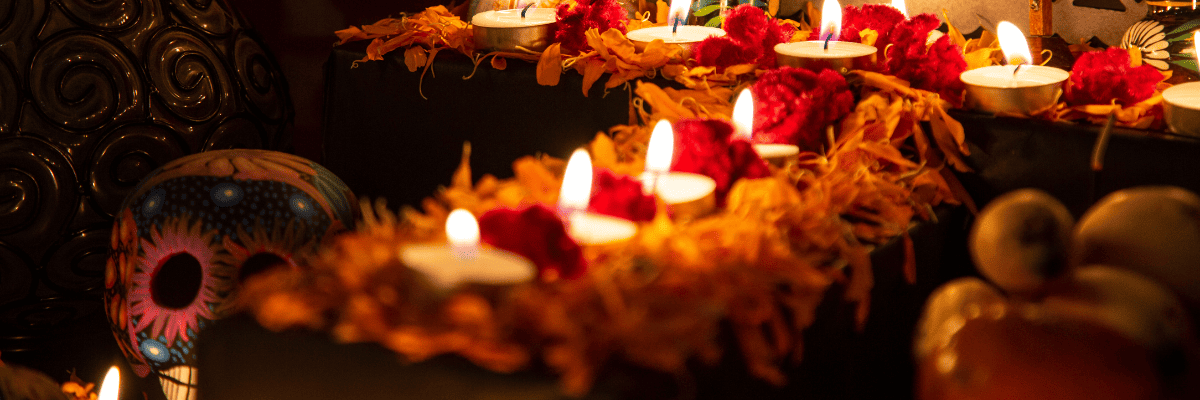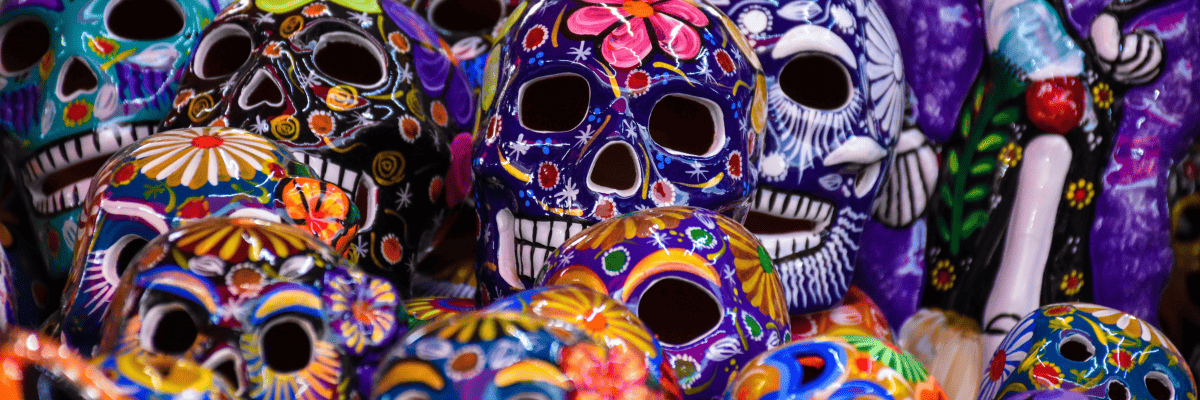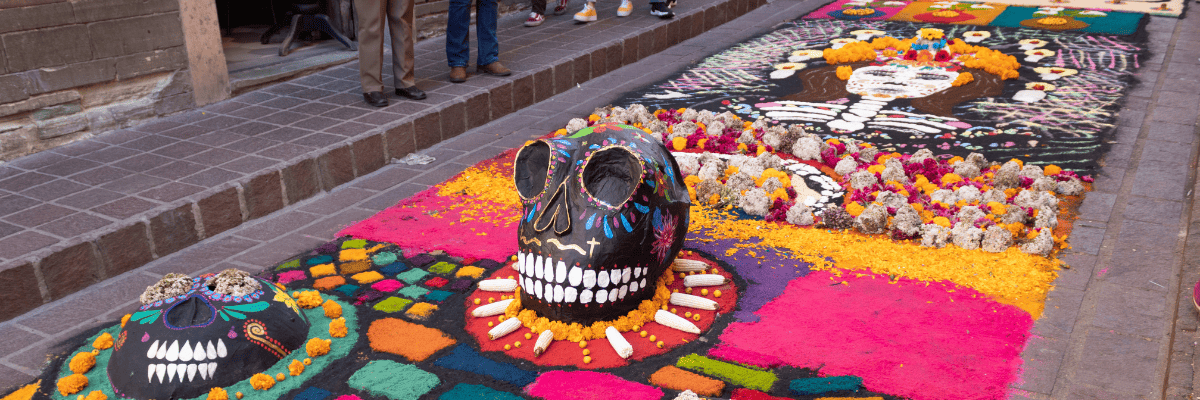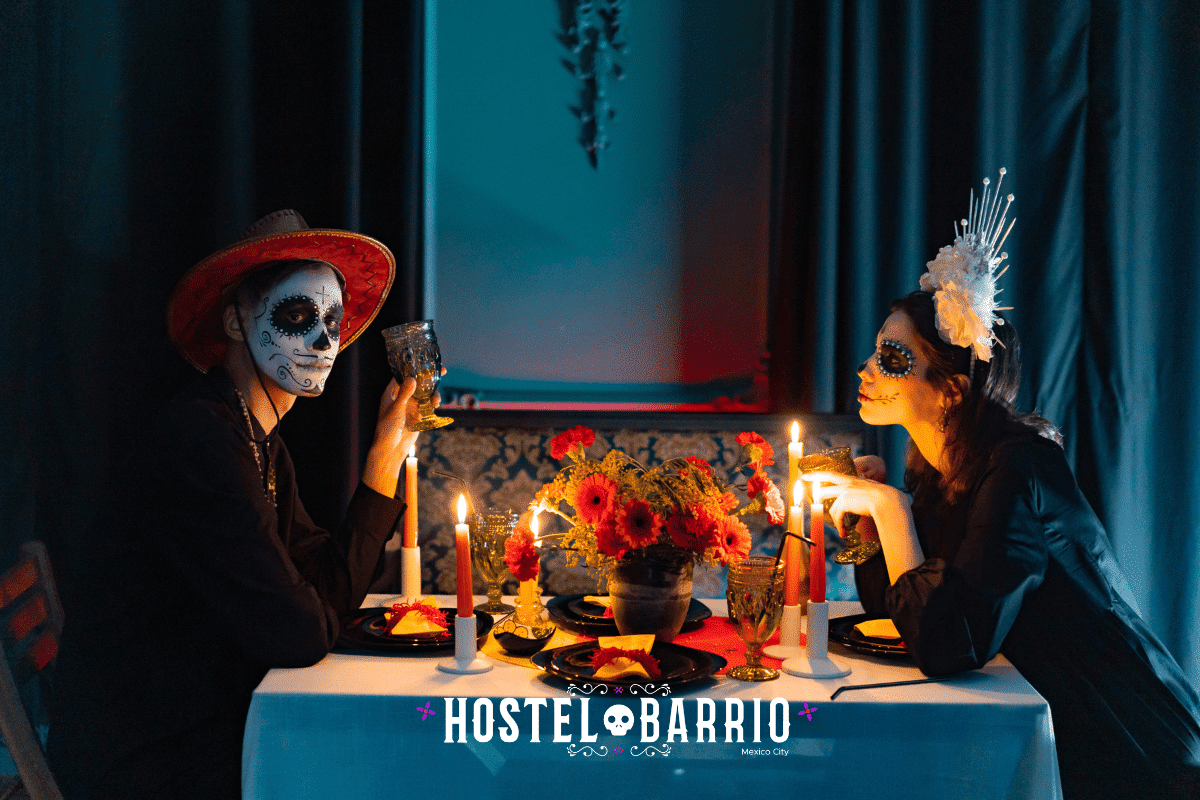The Day of the Dead is Mexico’s most iconic celebration, a festivity that honors the memory of loved ones who have passed away. Every year, between November 1 and 2, Mexican families come together to pay tribute to their departed family members and friends with vibrant and symbolic offerings and altars.
This day symbolizes the connection between life and death, reflecting Mexico’s deep cultural richness. In 2008, UNESCO recognized this tradition as an Intangible Cultural Heritage of Humanity, highlighting its significance and power to unite generations in a shared homage to memory and celebration.

Origin and History of the Day of the Dead
The Day of the Dead has deep roots in the pre-Hispanic civilizations of Mexico, such as the Aztecs, Mayans, Purépechas, and Totonacas, who already performed rituals in honor of the dead. For these cultures, death was not the end but a step towards another stage of existence. The ancient Mexicans believed that the souls of the dead temporarily returned from the beyond to spend time with their families.
With the arrival of the Spanish and the introduction of Catholicism, these traditions blended with the Christian celebration of All Saints’ Day and All Souls’ Day. This religious syncretism gave rise to the festivity as we know it today, combining pre-Hispanic elements with Catholic practices.
Why is the Day of the Dead Mexico’s Most Important Tradition?
The Day of the Dead is more than just a celebration. It is the essence of Mexican cultural identity. Its importance lies in its ability to connect people with their roots and their loved ones who are no longer here. Through this tradition, Mexicans celebrate life while honoring death, a concept deeply rooted in our worldview.
Despite external influences, the Day of the Dead has maintained its essence and evolved without losing its roots. Moreover, it is an inclusive celebration where people of all ages and social classes participate, passing down values and beliefs from one generation to the next. For this reason, and because it involves both the spiritual and the festive, the Day of the Dead is considered Mexico’s most important tradition.
Elements and Symbols of the Day of the Dead
The celebration of the Day of the Dead is filled with symbols and elements that reflect its deep meaning:
Ofrendas or Altars: The ofrendas, also known as altars, are the heart of the celebration. They are adorned with photographs of the deceased, food such as pan de muerto, fruits, sugar skulls, candles, and incense. Each element has a purpose, such as guiding souls back to the world of the living or remembering the tastes and preferences of loved ones.
Cempasúchil: The cempasúchil flower, known as the flower of the dead, is indispensable on altars and graves. Its vibrant color and strong fragrance are believed to guide souls to their ofrenda.
Pan de Muerto: This sweet bread is one of the most representative foods of the Day of the Dead. Its round shape symbolizes the cycle of life, while the figures that adorn it represent the bones of the deceased.
Skulls: Sugar skulls and representations of skulls, often made of clay or chocolate, are symbols of death, but they are presented in a festive manner, reminding us that death is not something to fear but a natural part of life.

La Catrina: La Catrina, a figure created by artist José Guadalupe Posada, is perhaps the most recognized symbol of the Day of the Dead. This elegant skull dressed in finery represents the idea that, in the end, we are all equal in death.
How the Day of the Dead is Celebrated in Different Regions of Mexico
The Day of the Dead is celebrated throughout Mexico, but each region has its own traditions that enrich the festivity. Some of the most important are:
Oaxaca City: In Oaxaca, comparsas (parades) fill the streets with music, dancing, and costumes while families prepare altars in their homes and cemeteries. Local art and culture intertwine in this celebration, giving the city a special atmosphere.

Pátzcuaro, Michoacán: The night of November 1 is magical in the Lake Pátzcuaro region, especially on the island of Janitzio. The inhabitants light up the lake with candles, and ceremonies are held in cemeteries to guide souls back home.
Mexico City: The capital celebrates with an impressive Day of the Dead parade along the city’s main avenues. Additionally, altars are set up in the Zócalo, and homes and businesses across the city are decorated with motifs related to the occasion.
Mixquic: This small town in Mexico City is known for its devotion to the Day of the Dead tradition. Families decorate the graves in the local cemetery with flowers, candles, and food, and a procession takes place that attracts thousands of visitors every year.
The Day of the Dead in Popular Culture
The Day of the Dead has transcended Mexico’s borders and influenced art, cinema, and music on a global scale. A notable example is the animated film Coco, which introduced this tradition to international audiences and showcased the beauty and depth of the celebration. Additionally, artists like Diego Rivera have captured the essence of the Day of the Dead in their works, contributing to its spread worldwide.
In countries like the United States, Mexican-origin communities celebrate the Day of the Dead, adapting the traditions to their context while keeping the spirit of the festivity alive. This globalization has made more people interested in learning about and participating in this unique tradition.

The Day of the Dead is something you simply can’t miss in Mexico. So, if you come to Mexico City to take part in this incredible tradition, what better place to stay than Hostel Barrio! A space that celebrates this important day every single day.
We’re right in the heart of the Historic Center, where the magic of the Day of the Dead comes to life. From here, you’ll have everything just steps away: parades, ofrendas, and an atmosphere that will make you feel part of this unique and incredible celebration.
Make your plan and get ready to experience the Day of the Dead like a true local.
See you soon!







